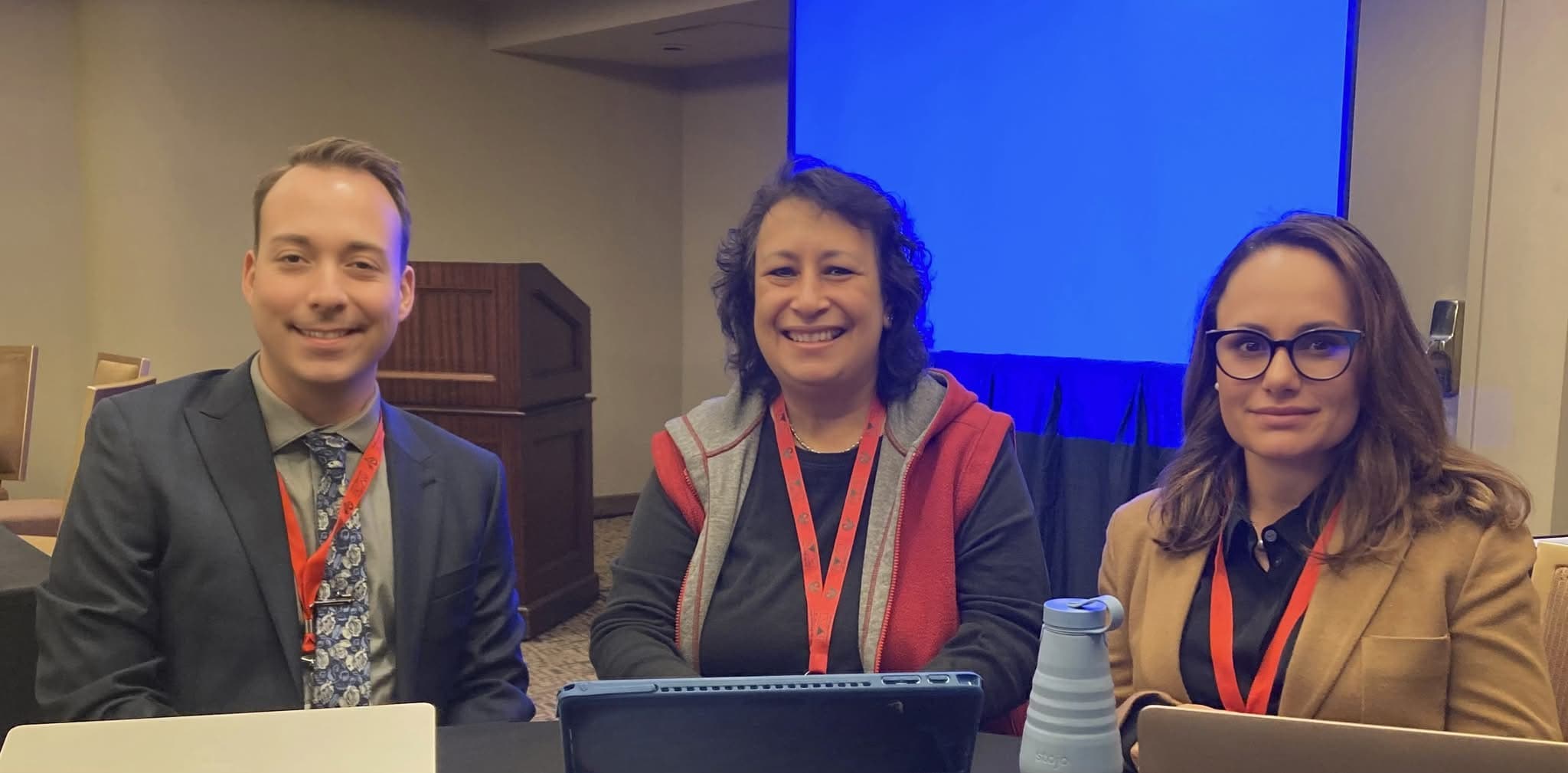Amplifying Student Voices: Doctoral Student Research on Community-School Engagement
Julie McMorris | School of Education & Human Development Apr 8, 2025
In the world of education, the gap between school districts and the communities they serve often remains wide, with many students feeling disconnected from the systems designed to support their success. However, a team of graduate students, led by Dr. Paula Gallegos, is working to bridge that divide. By partnering with Dr. Margarita Bianco’s Pathways2Teaching program, they are investigating how concurrent enrollment programs impact students' perceptions of community-school engagement, specifically exploring how students view community support as they pursue their academic goals.
Two of the graduate students involved in this ongoing project, Andrew Dutch and Fagana Stone, are working together to better understand these connections and the ways in which students’ voices can inform and reshape educational practices.
Andrew Dutch, a PhD student in the critical studies in education concentration, views the Pathways2Teaching program as a critical component of his research. "The connection between the school and the community is what drives students who want to move forward into that next stage of their lives, especially those who are considering becoming teachers," Dutch explained. "Whether they have family support, school support, or neither, they still aspire to enter the teaching profession."
The research conducted by the team focuses on understanding how students in the concurrent enrollment program—many of whom are considering teaching as a career—perceive their connection to both their schools and communities. Stone and Dutch aim to uncover what kind of community support these aspiring educators need and how it influences their aspirations. "We started with predefined codes based on existing literature, but as we analyzed the interviews, we allowed students to define their own terms," Fagana Stone said, a PhD student in the Research and Evaluation Methods concentration program. "We wanted to let the students tell us what community-school engagement means to them based on their experiences, including resources, opportunities, and relationships for impactful learning opportunities."
In their research, Stone and Dutch discovered that the concept of community engagement is not one-size-fits-all. "There were students who considered community only their family, while others saw it as everything around them," Stone shared. This variation led them to reposition their approach and focus on understanding how students define and perceive their community. "As we analyzed the data, we discovered that kinship—family bonds—was a recurring theme in the interviews," Stone explained. "So, we began coding for that as well, as it became clear that kinship was a critical element in these students' understanding of community and school relationships."
The research team also addressed the barriers that many students face, particularly those from first-generation immigrant backgrounds. "Many students shared that their parents couldn’t engage with the school system due to language barriers, work schedules, or lack of internet access," Stone explained. These challenges, coupled with systemic issues such as racial discrimination, further highlighted the need for schools to recognize the unique needs of these students and work to engage families in more meaningful ways, especially when it comes to guiding and supporting their educational and career aspirations.
The results of their research could have important implications for educational policy, particularly in how schools support students aspiring to enter the teaching profession. Dutch noted that their findings might help shift the conversation about parental involvement. "We need to look at how schools engage with parents—not just in terms of attendance at meetings, but in more systemic ways that recognize cultural and economic barriers," he said. Stone added that their research could push for policy changes, particularly in districts where the cultural demographics differ from the expectations of school systems. "If we can pilot these ideas in districts and they work, we could create a domino effect that leads to broader changes," she said.
The research team’s findings are already reaching audiences beyond their immediate university environment. Stone and Dutch, along with the team lead Dr. Paula Gallegos, recently presented their work at the National Association for Multicultural Education (NAME) conference, and they are preparing to present the full paper at the American Educational Research Association (AERA) conference in the spring. The upcoming presentation will focus on lifting up the voices of minoritized students in particular. "Students have a lot to say about school-community engagement," Dutch said. "We’ve spent months analyzing their data, and when we finally listened to them, it all made sense."
In their presentation, Dr. Gallegos, Stone, Dutch, and their team will highlight how the research process evolved as they moved away from their initial assumptions and learned directly from the students. Their work emphasizes that educational leaders must not only listen to students but also actively incorporate their feedback into decision-making and partner with their families. "Our hope is that this research will show educators, district leaders, and policymakers that the voices of students should be at the forefront of any educational reform, especially when it comes to creating pathways for future teachers," Dutch stated.
As the Pathways to Teaching research continues to unfold, both Dutch and Stone are hopeful that their findings will encourage systemic change. "We want schools to take a closer look at how they define community engagement," Stone said. "By listening to students and understanding their experiences, we can begin to close the gap between schools and the communities they serve."
Their work is a reminder that the most effective solutions in education come not from top-down mandates but from the voices of those who are directly impacted by the system. In this case, it’s the students—especially those considering teaching careers—who are leading the way toward a more connected and inclusive educational experience.